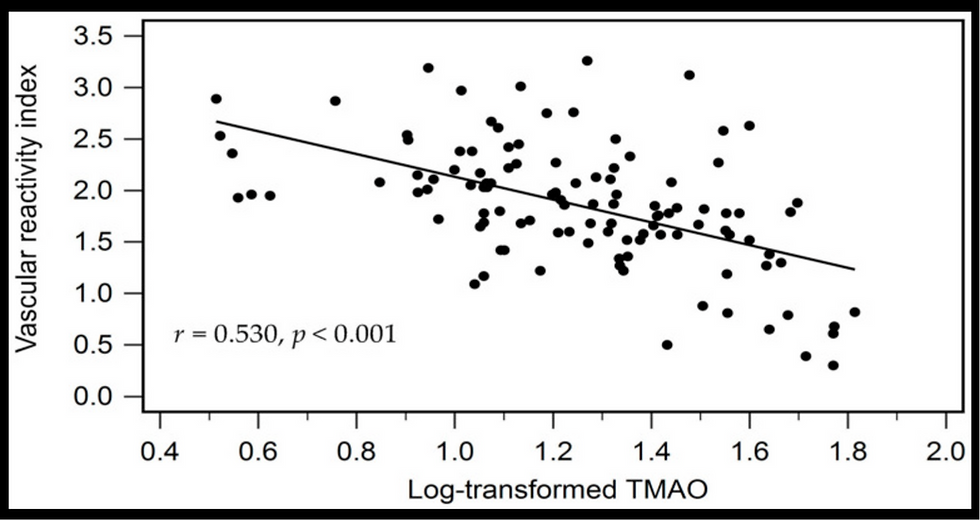Advanced MRI Studies Show Vaping Causes Endothelial Dysfunction
- heartlung
- Jan 16, 2023
- 2 min read

Radiology. 2019 Aug 20:190562.
Acute Effects of Electronic Cigarette Aerosol Inhalation on Vascular Function Detected at Quantitative MRI.
Caporale A1, Langham MC1, Guo W1, Johncola A1, Chatterjee S1, Wehrli FW1.
Author information
1
From the Laboratory for Structural, Physiologic and Functional Imaging, Department of Radiology (A.C., M.C.L., A.J., F.W.W.), Department of Biostatistics and Epidemiology (W.G.), and Institute for Environmental Medicine and Department of Physiology (S.C.), University of Pennsylvania Perelman School of Medicine, 3400 Spruce St, Philadelphia, PA 19104.
Abstract
Background Previous studies showed that nicotinized electronic cigarettes (hereafter, e-cigarettes) elicit systemic oxidative stress and inflammation. However, the effect of the aerosol alone on endothelial function is not fully understood. Purpose To quantify surrogate markers of endothelial function in nonsmokers after inhalation of aerosol from nicotine-free e-cigarettes. Materials and Methods In this prospective study (from May to September 2018), nonsmokers underwent 3.0-T MRI before and after inhaling nicotine-free e-cigarette aerosol. Peripheral vascular reactivity to cuff-induced ischemia was quantified by temporally resolving blood flow velocity and oxygenation (SvO2) in superficial femoral artery and vein, respectively, along with artery luminal flow-mediated dilation. Precuff occlusion, resistivity index, baseline blood flow velocity, and SvO2 were evaluated. During reactive hyperemia, blood flow velocity yielded peak velocity, time to peak, and acceleration rate (hyperemic index); SvO2 yielded washout time of oxygen-depleted blood, rate of resaturation, and maximum SvO2 increase (overshoot). Cerebrovascular reactivity was assessed in the superior sagittal sinus, evaluating the breath-hold index. Central arterial stiffness was measured via aortic pulse wave velocity. Differences before versus after e-cigarette vaping were tested with Hotelling T2 test. Results Thirty-one healthy never-smokers (mean age, 24.3 years ± 4.3; 14 women) were evaluated. After e-cigarette vaping, resistivity index was higher (0.03 of 1.30 [2.3%]; P < .05), luminal flow-mediated dilation severely blunted (-3.2% of 9.4% [-34%]; P < .001), along with reduced peak velocity (-9.9 of 56.6 cm/sec [-17.5%]; P < .001), hyperemic index (-3.9 of 15.1 cm/sec2 [-25.8%]; P < .001), and delayed time to peak (2.1 of 7.1 sec [29.6%]; P = .005); baseline SvO2 was lower (-13 of 65 %HbO2 [-20%]; P < .001) and overshoot higher (10 of 19 %HbO2 [52.6%]; P< .001); and aortic pulse wave velocity marginally increased (0.19 of 6.05 m/sec [3%]; P = .05). Remaining parameters did not change after aerosol inhalation. Conclusion Inhaling nicotine-free electronic cigarette aerosol transiently impacted endothelial function in healthy nonsmokers. Further studies are needed to address the potentially adverse long-term effects on vascular health.
© RSNA, 2019.
Scientific Updates Sponsored by Endothelix Inc. View Archives of Scientific Updates
![Lipoprotein(a) levels predict endothelial dysfunction in maintenance hemodialysis patients: evidence from [VENDYS] vascular reactivity index assessment](https://static.wixstatic.com/media/dac531_5285607cc591409a9d83746f042af7c6~mv2.png/v1/fill/w_980,h_980,al_c,q_90,usm_0.66_1.00_0.01,enc_avif,quality_auto/dac531_5285607cc591409a9d83746f042af7c6~mv2.png)


Comments